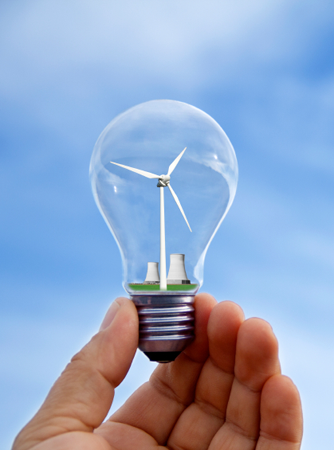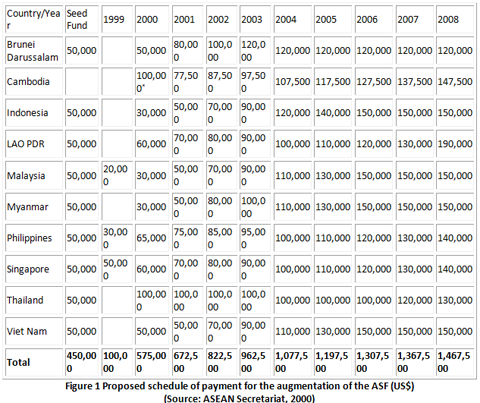
Science, technology and innovation can be powerful determinants and enablers of economic development, educational programmes and environmental protection. Essential investments in these areas can often provide the incentive and seed funding for accelerating developments that can cater to tomorrow's energy needs.
Meeting the growing global energy need is probably going to be the biggest challenge for humankind in the 21st century--well, perhaps after climate change.
ASEAN's primary energy requirement is projected to triple between 2005 and 2030, having already more than doubled between 1990 and 2007 with an annual growth rate of 4 percent (double the world's average). Therefore, meeting the region's energy needs, which will usher in unprecedented increases in coal use, oil and gas imports and greenhouse gas emissions, will prove to be a challenge.
The ASEAN Trust Fund for Science and Technology, better known as the ASEAN Science Fund (ASF), established at the 21st Meeting of the ASEAN Committee on Science and Technology (COST) in Yogyakarta, Indonesia in 1989, aims to boost ASEAN's competitiveness and the need for stronger funding support to seed regional programmes in science and technology (S&T), including that of energy.
In April of 2000, ASEAN Ministers on S&T signed the Agreement on the Augmentation of the ASF in Genting Highlands, Malaysia, requiring each ASEAN member country to make a mandatory target contribution of US$1 million each over a period of 10 years, to reach a total of US$10 million. The proposed schedule is listed in Figure 1.

The ASF is based on a model where only the interest of the Funds can be utilised for scientific and technological research "done on an economical basis with maximum benefits". Such funding mechanisms are not uncommon in ASEAN. An example includes the ASEAN Development Fund (ADF), which serves as ASEAN's common pool of financial resources to support the implementation of the Vientiane Action Programme (VAP).
The vital point about these funds is the embedded bureaucracies within the regional body and other barriers such as the varied renewable energy potentials of individual ASEAN member country. The funds' use requires a stringent appraisal process where projects seeking its support are judged based on criteria that include regionality, appropriateness and relevance.
Due to the vast scale of the energy challenge, funds need to be channelled towards projects and investments in stronger and smarter infrastructure, so as to overcome bottlenecks in electricity transmission capacity in important markets that threaten to limit future expansion of low-carbon technologies. Such systems should also operate more intelligently, to reduce the need for expensive peak generating capacity and provide for quicker demand response in the ASEAN region. Furthermore, home to 567 million people in 10 member states, ASEAN has a startling 160.3 million people without electricity, according to the International Energy Agency (IEA)'s 2008 estimates.
Rural electrification rates range widely throughout the region, from 10 percent in Myanmar to 100 percent in Singapore.
Governments need to act early and without hesitation to stimulate development of new, breakthrough technologies in energy, as well as to facilitate accessibility to finance mechanisms for such projects. There is a need to correct existing market failures to provide the necessary funds, and policy levers required to steer energy finance towards addressing longer-term energy stability, access and sustainability are similarly lacking in the ASEAN region. To this end, strategic and substantial support for research development and demonstration (RD&D) will be essential.
While early-stage investments in Science and Technology are undoubtedly extremely important, it has to be noted that a majority of technologies for facilitating energy access for low-income communities are already established and, relatively speaking, "low-tech" in nature. Bearing this in mind, if the primary objective of the Fund is facilitating energy access to rural communities, it can probably be more effectively deployed as a means of stimulating, accelerating and leveraging private-sector finance through more direct interventions. Examples of intervention by the Fund include: Lowering credit risk profile of projects that create access to energy in rural communities through guarantee programmes; providing seed capital to small-scale, green field energy projects and absorbing first-mover risk; financing demonstration projects to provide evidence of feasibility; and other such mechanisms.
The ASF and ADF could be better utilised by ASEAN to leverage private capital for investment in energy projects in the region. This would aid in mitigating financial risks and ensure that project developments have access through the ASF and ADF to obtain larger pools of money.
Funding from dialogue partners such as the European Union (EU) is another source of funds that can be channelled towards energy projects. Presently, the principal sources of funds for programmes and activities of COST are dialogue partners, and they remain an important component of ASEAN S&T cooperation. Current dialogue partners are Australia, Canada, China, EU, India, Japan, New Zealand, Republic of Korea (ROK), Russian Federation, the US, and the United Nations Development Program (UNDP), with Pakistan as a Sectoral Dialogue Partner. However, relations with some dialogue partners continue to remain challenging, with unresolved issues of funding, mismatched interests, and non-discrimination.
For the period 2002–2004, funds from Dialogue Partners supported about 87.1 percent of the total cost of projects and activities undertaken by COST Sub-Committees, of which there exists a Sub-Committee on Non-Conventional Energy Research (SCNCER) that looks into biofuels and nuclear energy. This amounted to approximately US$12.66 million out of the total project cost of US$14.54 million.
There is huge potential for private investment toward financing tomorrow's energy needs. However, modalities for fund usage are not clear and serve only to deter potential financiers. Furthermore, high risk premiums associated with projects in low-income or highly-indebted countries, uncertainties due to long tenures and the requirements for government guarantees, foreign exchange risks, including currency mismatch arising from long tenures, and the weak capacity of domestic financial institutions and markets pose significant impediments to financing initiatives.
A report by the Asian Development Bank (ADB) Institute on Infrastructure Financing Requirements in ASEAN highlight that further impediments include high costs and limited insurance facilities; process inefficiencies and lack of capacity to manage projects; limited information and coordination; and market and regulatory restrictions.
The development of an appropriate ASEAN energy and infrastructure financing mechanism for developing and financing bankable projects, particularly cross-border projects, is therefore crucial not just towards enhancing physical connectivity within the region to meet the ASEAN Economic Community and Plan of Action for Energy Cooperation goals by 2015, but also to ensure that tomorrow's energy needs can be adequately developed and met.
Shiva Prasad Susarla a Research Associate with the economics team at the Energy Studies Institute (ESI). He will be speaking at Asia Smart Grid. Melissa Low is an Energy Analyst at ESI. She was part of a 12-member youth delegation to the United Nations Framework Convention on Climate Change (UNFCCC) Conference of Parties (COP) 15 talks in Copenhagen in December 2009.
By: Melissa Low and Shiva Prasad Susarla, Energy Studies Institute